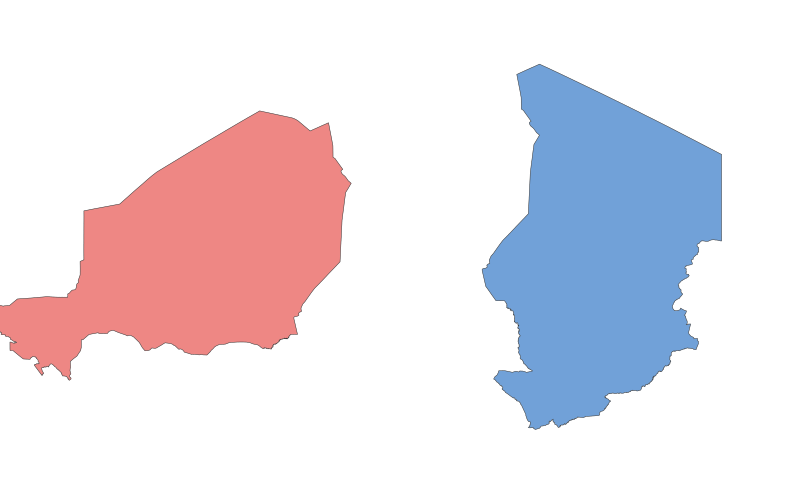Niger vs. Tschad: Ein geografischer Vergleich

Vergleichstabelle
| Kategorie | Niger | Tschad |
|---|---|---|
| Lage | Westafrika, Binnenstaat | Zentralafrika, Binnenstaat |
| Größe | 1.267.000 km² | 1.284.000 km² |
| Klima | Wüsten- und Halbwüstenklima | Wüstenklima im Norden, Savanne im Süden |
| Naturressourcen | Uran, Gold, Erdöl | Erdöl, Gold, Uran |
| Urbanisierung | Hauptstadt Niamey, geringe Urbanisierung | Hauptstadt N'Djamena, geringe Urbanisierung |
| Verkehr | Begrenztes Straßennetz, wenige Flughäfen | Ähnlich, aber etwas besser entwickelt |
Beschreibung der Länder
Niger
Niger, ein Binnenstaat in Westafrika, ist bekannt für seine weiten Wüstenlandschaften, darunter die Sahara im Norden. Das Land hat eine reiche Geschichte, die bis zu den alten Transsahara-Handelsrouten zurückreicht. Die Kultur ist von verschiedenen ethnischen Gruppen wie den Hausa, Tuareg und Zarma geprägt. Die Wirtschaft basiert hauptsächlich auf Landwirtschaft und dem Abbau von Uran, einem der wichtigsten Exportgüter. Trotz seiner natürlichen Ressourcen gehört Niger zu den ärmsten Ländern der Welt.
Tschad
Der Tschad, ebenfalls ein Binnenstaat, liegt in Zentralafrika und ist geografisch vielfältig mit Wüsten im Norden und Savannen im Süden. Der Tschadsee, ein wichtiges ökologisches und wirtschaftliches Zentrum, ist ein prägendes Merkmal des Landes. Die Geschichte des Tschad ist von Konflikten und kolonialer Herrschaft geprägt. Die Kultur ist eine Mischung aus arabischen und afrikanischen Einflüssen, mit über 200 ethnischen Gruppen. Die Wirtschaft des Tschad stützt sich stark auf Erdölexporte, bleibt aber aufgrund politischer Instabilität und infrastruktureller Herausforderungen fragil.
Beide Länder stehen vor ähnlichen Herausforderungen wie Armut, Klimawandel und politische Instabilität, bieten aber auch einzigartige kulturelle und natürliche Schätze.